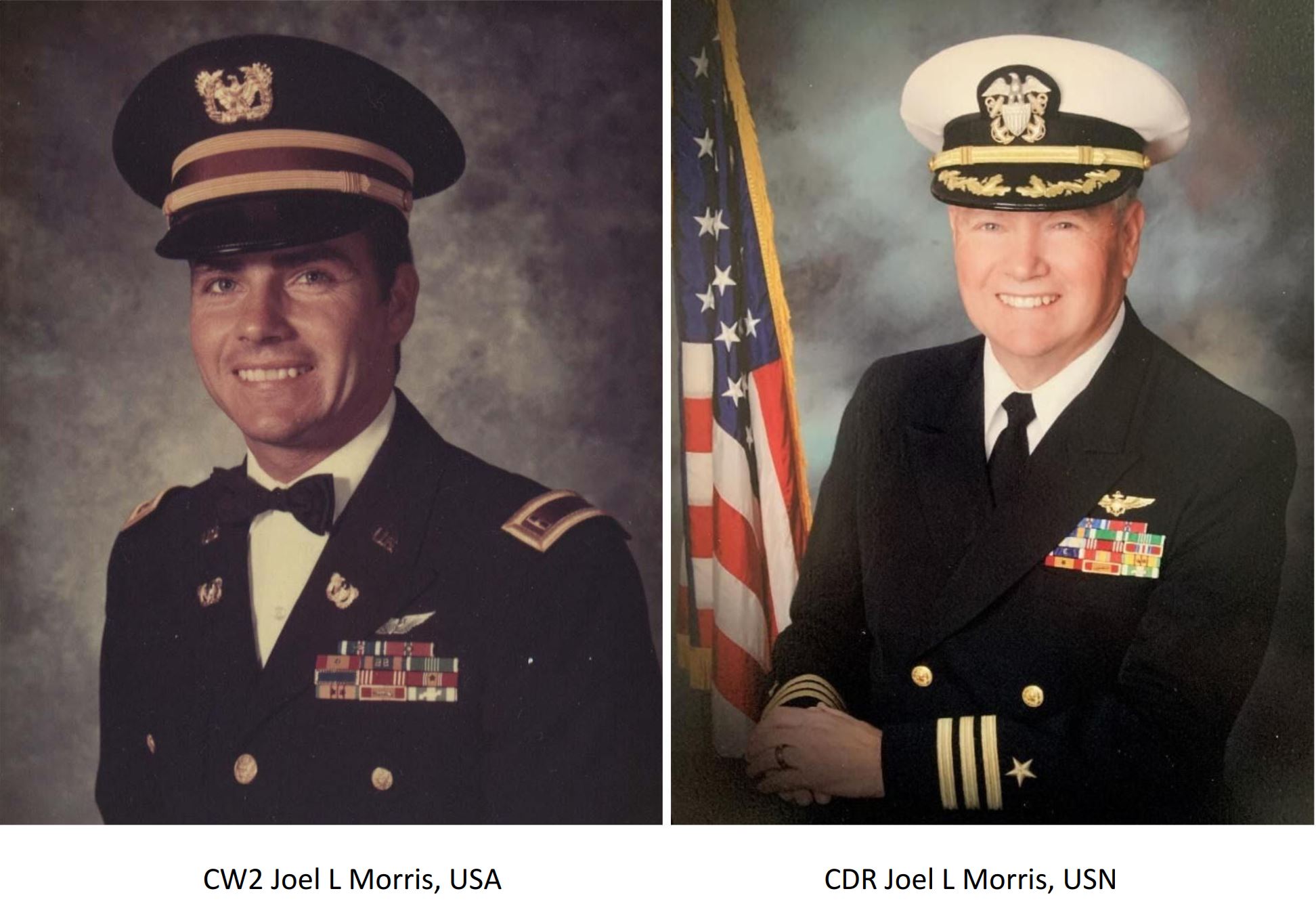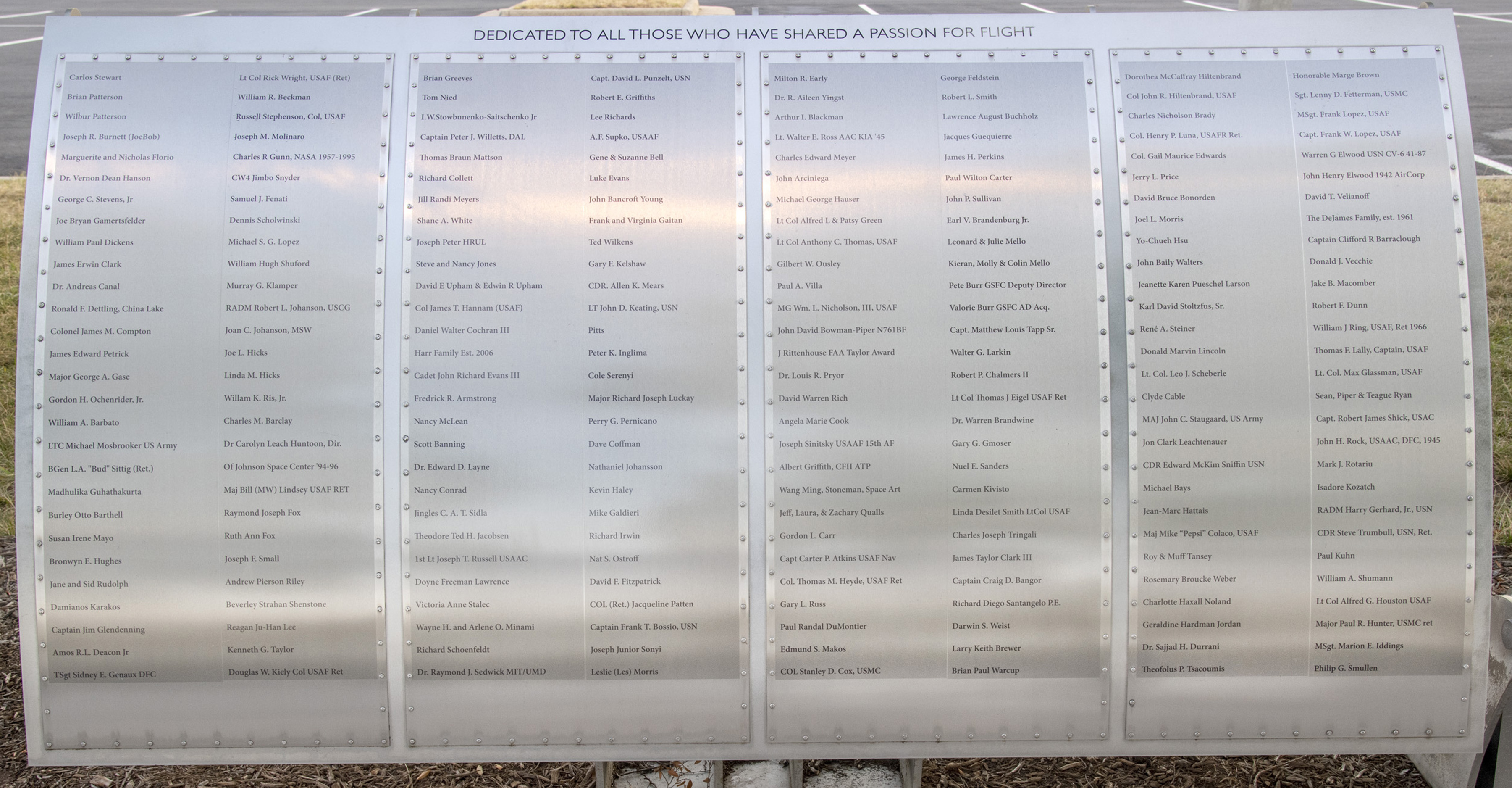Joel L. Morris

Foil: 51 Panel: 4 Column: 1 Line: 8
Wall of Honor Level: Air and Space Sponsor
Honored by:
Ms. Kimberly Sue Myers
Joel L. Morris was born July 21, 1948, in San Diego, California. His father, a WWII B-25 pilot, assisted in developing Joel's interest in aviation; resulting in him obtaining a private pilot's license by the age of 17. In the fall of 1969, as the US presence and combat operations in Vietnam escalated, Joel, a junior attending Pasadena College in Southern California, chose to enlist in the Army in order to fly helicopters in Vietnam. Joel's skill as a pilot was evident early on when, while still a student, he successfully autorotated his helicopter into a river without loss of life. The cause was determined to be a catastrophic engine failure. For his outstanding airmanship he was awarded the "Broken Wing Award." A few weeks later he graduated flight training, was awarded his Army wings, and qualified for the "Commandant's List" (top 10% of the graduating class). Given his choice of helicopter platforms, he volunteered to fly medevac and was ordered to the medevac pilot training course at Fort Sam Houston, Texas with follow on orders to Vietnam.
Arriving in Vietnam in April of 1970, he was assigned to the First Air Cavalry Division as a medevac pilot and given the callsign, "Medevac 26." Memorable moments include being shot down and rescued while extracting a wounded soldier and participating in a secret POW recovery raid in Tay Ninh Province. Though the rescue failed to recover the POWs, Morris andhis crew successfully evacuated numerous wounded soldiers in the ensuing battle with the VC, resulting in being awarded his second DFC.
He flew 786 combat hours in-country and during his 11-month tour he was awarded two Distinguished Flying Crosses (DFC), a Bronze Star, 22 Air Medals, and an assortment of other campaign ribbons including the Vietnamese Cross of Gallantry.
After completing his combat tour, Morris opted to return to his education and completed his business degree (BS) at California Polytechnic University before enrolling in the Navy's "AVROC" flight program in order to become a Naval Aviator. He received his Navy wings in May of 1974 and was assigned to fly the Navy's long-range reconnaissance and anti-submarine warfare aircraft, the P-3C(U). Morris completed a successful tour in VP-19 as a Patrol Plane Commander and was recognized with the awarding of a Navy Commendation medal for his performance during his tour when VP-19 was selected as the outstanding VP squadron in the Western Pacific. He then served a tour in the Multi-Engine Advanced Training Command as a T-44 instructor pilot before deciding to transfer to the Naval Reserve and joining the General Dynamics Flight Department in December of 1979 as a full-time pilot in their newly emerging Flight Test Operations.
During his 32-year career at General Dynamics (GD) via legacy companies: Hughes Aircraft Company (HAC), and Raytheon Flight Test Operations (RFTO), he flew over 22 different types of aircraft. This included ultra-lights and helicopters in numerous flight test programs performed by those companies. Several of note was the development of the General Dynamics Advanced Cruise Missile (ACM) navigation system in an experimental Beechcraft 200 aircraft. The ACM was the first stealth cruise missile with a nuclear payload designed to be carried by the vulnerable B-52 aircraft. Morris was appointed Chief Pilot as the department expanded and with the acquisition of a Falcon 20 jet aircraft. The aircraft was modified to hold a cruise missile shape attached to the underside of its belly and fitted with a barrel nose assembly installed on the front of the aircraft for IR and LADAR sensor development for future applications in military aircraft and weapons systems.
When the company was acquired by the Hughes Aircraft Company, Morris continued as Chief Pilot and was later promoted to Manager of the Flight Operations Department. With a much larger stable of flight test aircraft including: six A-3 Skywarriors, a DC-9 jetliner, a Jetstar II, and a T-39 Sabreliner to join the current King Air 200 and Falcon 20, he personally participated in the development of numerous classified projects. These included the B-2 radar cross-section (RCS) certification program, F-22 Raptor early RCS verification, and eventually the development of AESA radar technology using a highly modified widebody DC-10 under a program called, "Multi-Platform Radar Technology Insertion Program?€‹" (MP-RTIP). This program led to many future AESA radar advancements with applications for both fighter and reconnaissance aircraft.
The Raytheon Company then acquired HAC and the same DC-10 wide-body airframe was used to install the largest open-air cavity aero window to date, for multi-sensor simultaneous testingfor the Missile Defense Agency (MDA). Several years later, Morris led in the acquisition of a B-727 airframe from American Airlines which Raytheon then converted to the multi-program testbed aircraft (RMT) currently in use today with the callsign, "Voodoo One." Voodoo One has been involved with a myriad of classified sensor development programs for which Morris served as Flight Operations Manager and Chief Pilot for the remainder of his career. He was also responsible for the acquisition and crewing of a very unique aircraft called an Egrett (G-520). Six of these aircraft were built, but Raytheon modified and operated the only operational Egrett in the world at that time. The Egrett is a single-piloted, single-engine turboprop aircraft which holds the altitude record in class of over 53,000 feet. Morris had the unique privilege of flying the longest flight ever flown in the aircraft, as he transited 3,200 miles from Van Nuys, CA to Honolulu, HI. A supplemental fuel tank had been installed to make the trip possible and the mission was flown at 45,000 ft in 13.6 hours in an unpressurized cockpit. The aircraft was then fitted with an articulating EO sensor ball mount and was used for missions off the coast of Hawaii for still classified purposes. He also flew the same aircraft from Van Nuys, CA to NAS Sigonella, Italy in support of similar missions. Flights typically required 10 hours of data collection with precision flying in order to deem it a successful data collection effort. Those data collection successes are still being used and developed today on behalf of DARPA and other U.S. military agencies.
Over the course of his 50-year aviation career, Morris flew over 33 types of helicopters and aircraft (mostly experimental) and mostly in the performance of flight test operations missions. He holds 14 different type ratings and has accumulated almost 12,000 hours in both combat and flight test operations. He served as an elder in his church for over 12 years, and in retirement serves as volunteer staff for international missions. He also serves on the Board of Directors of a newly formed, non-profit Christian training organization called Global Discipleship Initiative (GDI). He has been married to Rosemary Morris (Fuentes) from Cucamonga, CA for over 46 years and from their seven children they now enjoy 22 grandchildren and a very full and rewarding life.
Wall of Honor profiles are provided by the honoree or the donor who added their name to the Wall of Honor. The Museum cannot validate all facts contained in the profiles.
Foil: 51
All foil images coming soon.View other foils on our Wall of Honor Flickr Gallery
